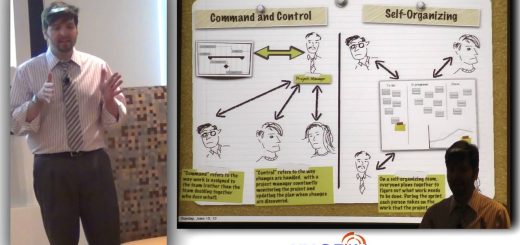Removing Team Members From Software Development Projects
Sometimes, it is not possible to keep a team member who is causing problems for your software development project. In their book “Managing the Unmanageable”, Mickey Mantle and Ron Lichty provides advice to the project manager on how to dismiss a person who is not performing well or who demonstrates a disruptive influence on the project.
Removing someone from a software development team is an incredibly difficult decision, even if most poorly performing employees know they are performing poorly. In this case, the decision should be the very last resort. However, if you have a toxic team member, you should act as quickly as possible.

We believe that you should err on the side of dismissing anyone who is not performing well or who demonstrates a disruptive influence on the organization. We always follow due process for dismissal, giving the programmer a chance to turn a situation around. But when it becomes clear that a programmer is not going to make a turnaround and become an acceptable performer, you should move as quickly as possible to dismiss them.
Poor performers cause a drag on an organization in many ways. They use up an expense line in your budget without pulling their weight on the delivery side. Others who observe their poor performance become unmotivated themselves or, perhaps worse, lose respect for you as a manager. Poor performers impact project schedules by missing milestones, thereby penalizing everyone on the project. Poor performance discussions eat up agenda time in managers’ meetings. Regardless, the situation must be addressed quickly.
Though difficult to broach, termination is usually a good thing for both you and the employee. Most poorly performing employees know they are performing poorly. Few have delusions that they are performing at an outstanding, or even adequate, level. They carry this burden with them to work each day and go to sleep with it each night. It is a heavy burden for most people to bear. So, when you at last confront them and begin the termination process (it usually starts with some sort of performance improvement notice), the employee is usually relieved. Many at that point choose to leave immediately, but others choose to try the performance improvement route. Make sure that if the performance improvement path is taken, you meet with the employee regularly—even frequently—to review and discuss results.
When termination remains the only option, engage your HR department to help prepare the final paperwork and paycheck. Then meet with the employee, usually on a Monday, not a Friday. This will give you a whole work week to meet with your remaining employees and make sure they have sufficient information to know the termination was handled humanely and that no more are currently pending (even if they may be).
Exit Checklist
It is helpful to have a checklist of items to review when you meet with an employee you are going to terminate. These situations can get emotional and are at least universally uncomfortable for all. So having something to go over gives both of you a purpose, and completing the checklist provides a clear end to the meeting.
While the exact checklist will vary from organization to organization, the exit checklist provided as a tool for this chapter is a good starting place if your organization does not provide one. Review it and add any specialized items that may be appropriate.
Reference: “Managing the Unmanageable: Rules, Tools, and Insights for Managing Software People and Teams”, Mickey Mantle, Ron Lichty, Addison-Wesley


